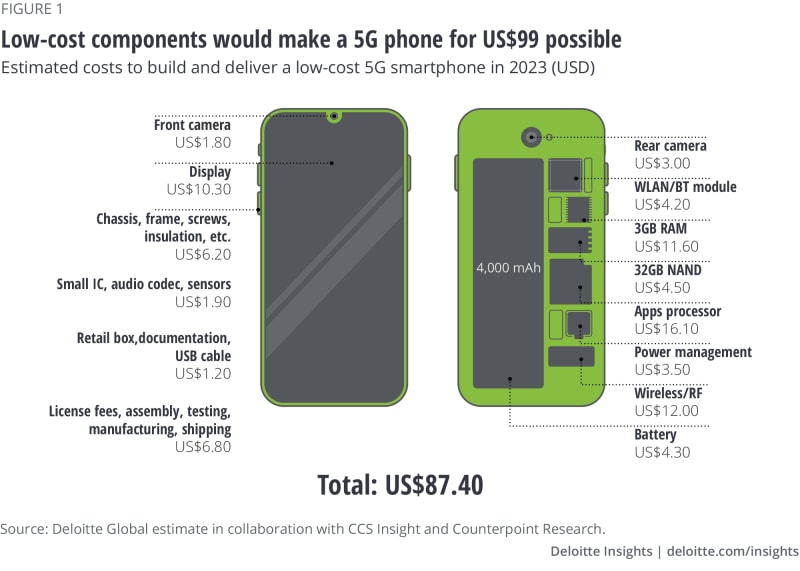The first step is clear: Get 5G phones into customers’ hands. But US$99 is still expensive for many people. And beyond the device, people also need to fund regular payments for mobile data and services. Hence, improving access to credit will likely be a crucial prerequisite for the US$99 smartphone market.
This will be a challenge. Twenty-nine percent of people in developing regions are unbanked and so lack a formal credit history5; for lenders, issuing credit to this group is high-risk and carries heavy premiums. However, solutions are emerging to reduce lenders’ risk exposure. A provider could, for example, send push notifications and remotely lock devices if a customer does not pay their bill. In regions such as Latin America, remote locking has led delinquency rates to drop from 35% to 11%6—and if their device is locked, 83% of customers then pay the bill within 15 days, as opposed to several months. In developing markets, many telcos already offer mobile payment and banking solutions, and are well placed to be involved with creating financing.
Telcos have several factors to balance when crafting their long-term 5G strategies. First, they would incur the cost of network deployment, a significant capex outlay. Then, as they take advantage of the greater efficiency per gigabyte of 5G over 4G, they could potentially realize savings. And throughout, they could face uncertainty as they predict how quickly tariff prices will inevitably fall. To develop a winning strategy, therefore, telcos could do well to model profitability over 5G’s generational lifecycle. On the demand side, they will also likely need to quantify how many net new customers a US$99 5G phone could attract, as well as how much more data their existing customers could consume.
Perhaps most importantly for telcos, a low-cost 5G smartphone gives them a platform to explore new business models. For example, these devices could become ad-hoc fixed wireless access devices for households with poor fixed-line internet, delivering high-speed broadband for other devices anywhere within network coverage.
It’s not just telcos in emerging markets that could benefit from cheap 5G phones. Many manufacturers in developed economies, for example, are eager to experiment with private 5G networks, but many pilots are waiting on the availability of competitively priced 5G modems. A 5G smartphone is not sufficient to drive elements of a smart factory, but it could certainly be used in proofs of concept ahead of large-scale deployments.
Of course, a US$99 5G phone won’t have the features and horsepower of a US$1,000 model. From a certain point of view, this raises questions about the purpose of 5G. If 5G is about watching high-quality video, for example, then a cheap 5G phone is pointless—its low-res screen would be unable to display 4K HDR content with a high refresh rate, and users who download the file for an uninterrupted experience may find that the device’s limited storage space quickly runs low. But 5G is not just about these showpiece applications. In the long term, it’s about unlocking value by providing world-class connectivity to millions who might not currently have it, for work, education, or recreation. At US$99, that’s a bargain.


















